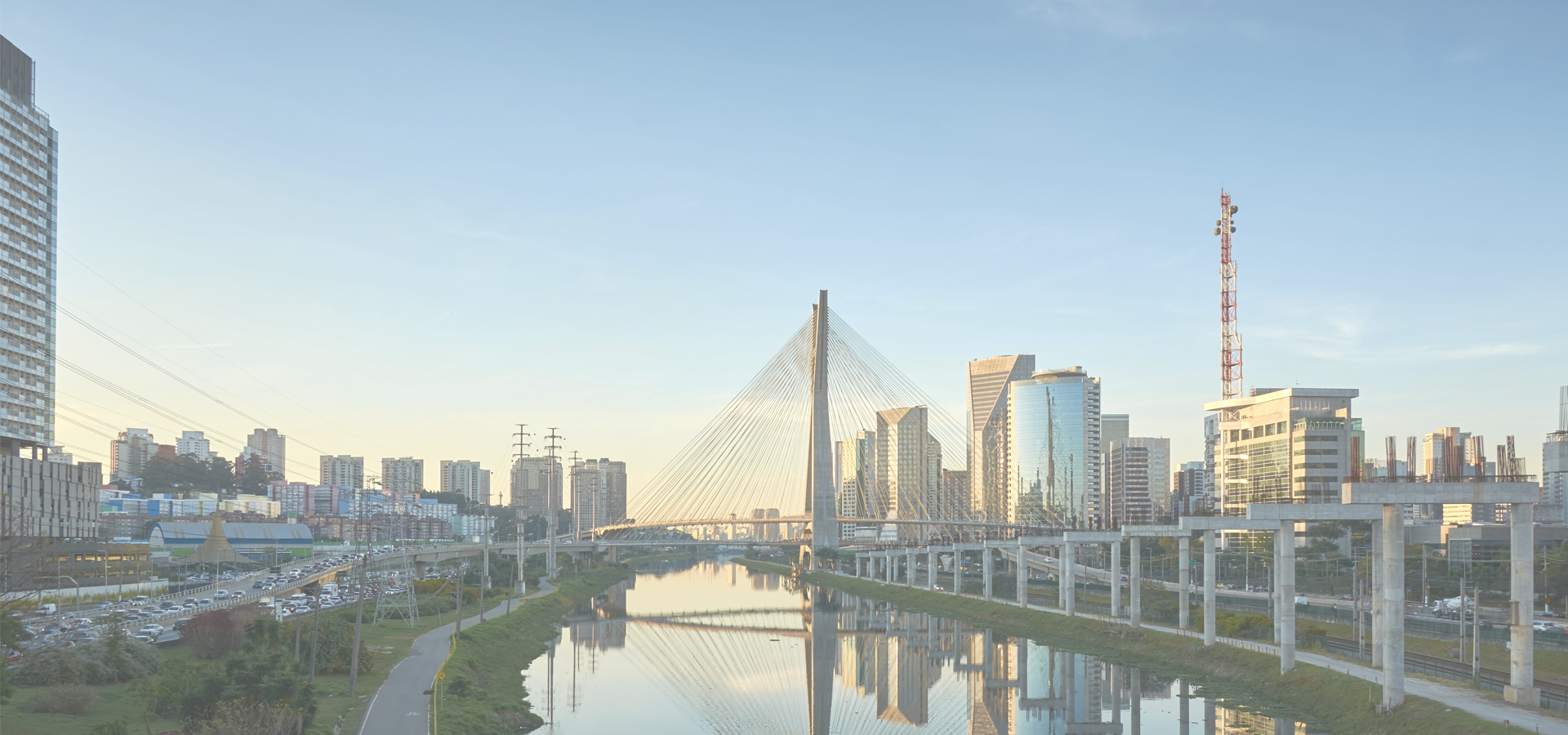Santana de Parnaíba, São Paulo, Southeast Region, Brazil
🇧🇷 Santana de Parnaíba is a city and municipality in the state of São Paulo in Brazil. It is part of the Metropolitan Region of São Paulo. It was founded in 1625 near the Tietê River by Susana Dias, an important Bandeirante wife.
The municipality contains and administers the 367-hectare (910-acre) Tamboré Biological Reserve, a strictly protected conservation unit.
It is one of the 39 cities that make up the Immediate Region of São Paulo which, in turn, is one of the two immediate regions that make up the Intermediate Region of São Paulo.
1History In 1580, Susana Dias, granddaughter of the chief Tibiriçá, along with her son, Captain André Fernandes, founded a farm on the edge of the Anhembi River (now the Tietê River), west of São Paulo, near the waterfall called by the Indians as "Parnaíba" (place of many islands).
Due to its strategic position in the Tietê River valley, it became the starting point of the flags that went towards the West of São Paulo and Mato Grosso. In 1625, the village was elevated to the condition of a village.
In the 18th century, the village went into decay due to the end of the flags. The geographical isolation of the village, caused by the waterfalls of the Tietê River and the rugged relief of its territory, meant that the village did not appear on the trade and colonization routes that connected São Paulo to the nascent cities of Jundiaí, Sorocaba and Itu.
In 1901, the Edgard de Sousa Hydroelectric Power Plant was inaugurated on the Tietê River, but it was not enough to revitalize the city, which lost much of its territories to its former districts of Cajamar, Pirapora do Bom Jesus and Barueri throughout the 20th century.
From the 1980s, the municipality regained economic dynamism, with the improvement of road connections with the rest of Greater São Paulo and with the impulse caused by the implementation of several residential condominiums, notably Alphaville.
1Economy The economy of Santana de Parnaíba is linked to the services and commerce sector, especially in the Alphaville region.
The industrial activity is located in the neighborhoods of Fazendinha and Tamboré.
Tourism has been developing in the city, aided by the colonial set of the historic center.
1Communications The city was served by the Brazilian Telephone Company (CTB) until 1973, when it was served by the Telecommunications of São Paulo (TELESP), which built the telephone exchange used to the present day. In 1998 this company was privatized and sold to Telefônica, and in 2012 the company adopted the Vivo brand for its fixed telephony operations.
The Telefônica/Vivo data centre was inaugurated in 2012 in the neighborhood of Tamboré, in a building of 33.6 thousand square meters, and houses the company's fixed and mobile telephony operations in Brazil.
1Transport: Road • Estrada dos Romeiros (SP-312) • Suru Ecotourism Road • Lieutenant Marques Road • Castelo Branco Highway (SP-280) • Rodoanel Mário Covas (SP-021)
1Tourist Industry The colonial architectural ensemble of the Historic Center has more than two hundred houses and buildings dating from the 17th and 18th centuries, highlighting the Mother Church of Sant'Ana. This is the largest colonial complex in the state of São Paulo.
In the Circuit of Alambiques it is possible to know the manufacturing process of artisanal cachaça.
The city promotes popular festivals that attract a large number of tourists, the city's carnival is very well known and attracts people from various regions.
Annually, the theatrical show of the Drama of the Passion of Christ recognised nationally is promoted by the Secretariat of Culture and Tourism of the municipality. The play is staged on the banks of the Tietê River, near the Edgard de Sousa Dam by actors from the city itself.
1Listed Buildings • Historic Center • Nossa Senhora da Conceição Chapel, Morro do Voturuna (1687) • Historical and Pedagogical Museum Casa do Anhanguera, Praça da Matriz, 9 (early 18th century) • Casa da Cultura Monsenhor Paulo Florêncio da Silveira Camargo, Sobrado do Anhanguera, Praça da Matriz, 19 and 25 (eighteenth century) • Morro do Voturuna, on the Old Chapel Road • Figueira Centenária, between the bridge over the Tietê River and the Historic Center • Morro do Major • Suru Chapel, on Suru Road
1America/Sao_Paulo/Sao_Paulo

Santana de Parnaíba has a population of over 142,301 people. Santana de Parnaíba also forms part of the wider São Paulo Metropolitan Region which has a population of over 23,455,256 people.
To set up a UBI Lab for Santana de Parnaíba see: https://www.ubilabnetwork.org Twitter: https://twitter.com/UBILabNetwork
🇧🇷 Santana do Parnaíba -23.447
🇧🇷 Itaquaquecetuba -23.483
🇧🇷 Mogi das Cruzes -23.517
🇧🇷 Carapicuíba -23.517
🇧🇷 Votorantim -23.533
🇧🇷 Embu das Artes -46.853
🇧🇷 Itapecerica da Serra -46.849
🇧🇷 Carapicuíba -46.833
🇧🇷 Várzea Paulista -46.831
🇧🇷 Santana do Parnaíba -46.919
🇧🇷 Mogi Guaçu -46.942
🇧🇷 Mogi Mirim -46.954
🇧🇷 São Sebastião do Paraíso -46.983
Locations Near: Santana de Parnaíba -46.9187,-23.4465
🇧🇷 Santana do Parnaíba -46.919,-23.447 d: 0
🇧🇷 Jandira -46.902,-23.533 d: 9.7
🇧🇷 Carapicuíba -46.833,-23.517 d: 11.7
🇧🇷 Itapevi -46.974,-23.558 d: 13.6
🇧🇷 Cotia -46.939,-23.606 d: 17.8
🇧🇷 Osasco -46.773,-23.542 d: 18.3
🇧🇷 Caieiras -46.74,-23.365 d: 20.4
🇧🇷 Embu das Artes -46.853,-23.649 d: 23.5
🇧🇷 Taboão da Serra -46.787,-23.625 d: 23.9
Antipodal to: Santana de Parnaíba 133.081,23.447
🇯🇵 Nago 127.978,26.592 d: 19393.3
🇯🇵 Ginowan 127.78,26.279 d: 19394.5
🇯🇵 Okinawa City 127.793,26.343 d: 19392.1
🇯🇵 Urasoe 127.734,26.254 d: 19391.8
🇯🇵 Naha 127.702,26.199 d: 19392
🇯🇵 Okinawa 127.809,26.409 d: 19389.8
🇯🇵 Tomigusuku 127.667,26.15 d: 19391.4
🇯🇵 Makishi 127.667,26.2 d: 19388.8
🇯🇵 Amami 129.483,28.367 d: 19360.3
🇯🇵 Miyakojima 125.267,24.8 d: 19208